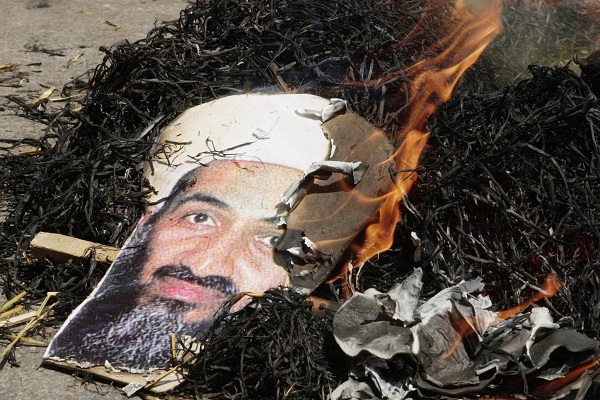Everyone knows something of what happened the night American Navy Seals killed Osama bin Laden in the Pakistani garrison town of Abbottabad. Frenzied reports followed the news of his death as information, much of it erroneous, flooded the public domain.
Bin Laden was armed and engaged the Seals in a fire fight; he was cowering behind his wife when Seals stormed his room and pushed her towards them; there was a stand-off where he looked into the Seals’ eyes before they shot him.
The New Yorker published a controversial account of events by Nicholas Schmidle where some of those untruths were advanced. Schmidle’s piece is so thick with atmospheric actualities that readers would reasonably assume that it is based on the testimonies of those involved, except it isn’t.
This conceit continues as Schmidle relates the last moments of bin Laden’s life. A Navy Seal entered his room where ‘The Al Qaeda chief, who was wearing a tan shalwar kameez and a prayer cap on his head, froze; he was unarmed.’ Later, Schmidle tells us ‘The first round, a 5.56-mm. bullet, struck bin Laden in the chest. As he fell backward, the SEAL fired a second round into his head, just above his left eye.’’
We know this to be untrue because one of Seals who shot bin Laden has broken rank and published his own account of the raid, No Easy Day. Mark Owen (a pen name) offers the only account of what transpired that night by someone who was actually there.
Insider accounts like this are expected to provide dramatic sequence, but what emerges here is punctilious measure. ‘We slowly crept toward the open door,’ he says of their approach to bin Laden’s bedroom. ‘We didn’t rush. Instead, we waited at the threshold and peered inside.’ Bin Laden had already been shot by another Seal earlier in the mission when he poked his head out of the room. By the time they got to the door, he was on the floor, convulsing. There was no face-off.
‘Everything was muscle memory,’ Owen recalls, underscoring the procedural nature of it all right to the end. And so, the book which markets itself as ‘the only first-hand account of the Navy Seal mission that killed Osama bin Laden’ is anticlimactic.
The real intrigue comes from everything that surrounds the book. Owen’s account is unauthorised and was not cleared by the Pentagon prior to publication. He insists that no confidentiality agreements were breached, but there is plenty in there to rile jittery officials in Washington.
At one stage Owen reels off a list of his combat deployments naming Afghanistan, Iraq, and the Horn of Africa. None of this is controversial but then, almost as an afterthought, he adds and we’ve operated in Pakistan before.’ It is inconceivable that this would have passed Pentagon censors. Officially, Pakistan is an American ally (whatever the reality) and both countries insist that no US military action has taken place on Pakistani soil since 9/11 other than the bin Laden raid.
The fallout has been widespread. Officials are now exploring different legal sanctions and a number of Seals have condemned Owen for breaking cover. Meanwhile, he wants to donate proceeds from the book to charities which support the Marines, but many have already said that they won’t accept donations from him.
It is not entirely surprising that Owen chose to publish this book. Most of the early leaks about the bin Laden raid came from within the White House. Obama has even authorised Kathryn Bigelow, director of The Hurt Locker, to produce a film about the raid. Slated for release later this year, it will draw heavily on classified information.
Hollywood’s version will doubtless be a cigar-chomping shoot-up; but Owen suggests that the real story is much more pedestrian than we might prefer. After all, there can only ever be so much novelty in assaulting and clearing a building – regardless of its inhabitants.






Comments